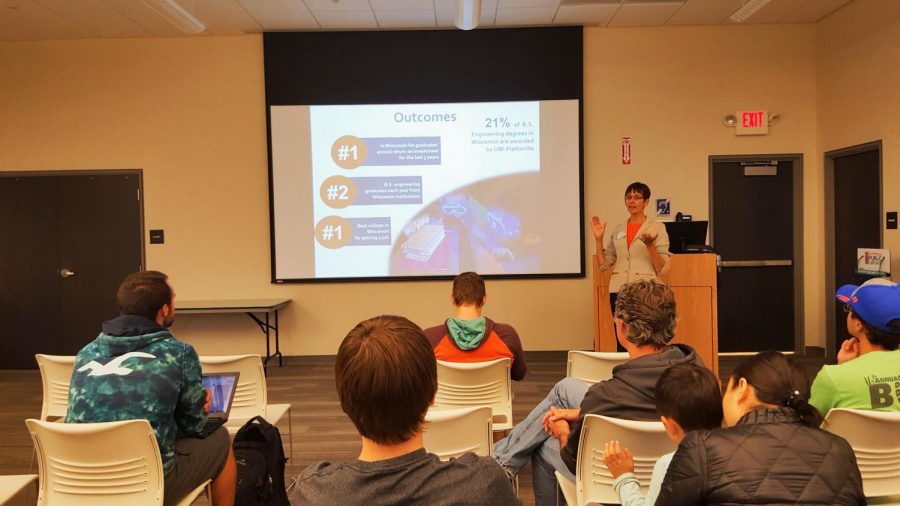Pioneer Talks: On-Campus Innovation
UW-Platteville leaders push for ways to improve innovation in EMS
The Platteville Public Library hosted Dr. Molly Gribb, dean of the college of EMS, for a Pioneer Talk about on-campus innovations. Gribb shared the methods and ideas surrounding the college of EMS and their push to create a better environment for innovation at University of Wisconsin-Platteville.
Gribb first offered examples of how students have used opportunities like the senior design projects on campus to create new ways to solve old problems.
One group of students in 2017 created a system that would kill off invasive zebra mussels with an Environmental Protection Agency approved compound called Zequanox. The students worked with the United States Geological Survey team to test the system on ponds in Northern Michigan.
“The students found this problem, and they found a really neat way to handle it. They looked at what had already been done, figured out why it didn’t work and created a new system that solved those problems,” Gribb said.
Gribb later handed the presentation over to Dr. Tony Hanson, a regional associate for the WiSys Technology Foundation. Hanson spoke about how WiSys, a nonprofit licensing organization, works with UW students to help turn their ideas into potential marketable realities. They help students in senior design develop ideas for what a customer would be looking for in a finished product. They also provide funding opportunities for students with promising ideas.
Along with their licensing arrangements, WiSys co-hosts events on campus that promote innovation, like the Prototype Hackathon. This event gives teams of students a problem and two days to come up with a product that solves the problem. In addition, students must make the product marketable to the businesses and organizations that would potentially use it.
“The time restraint and real-world problems offer students the opportunity to learn how to collaborate and create something they could actually need and use and allows them to see first-hand what a real-world project could be,” Hanson said.
Plans for the Sesquicentennial Hall match this drive for innovation, as features of the building will allow students to develop their projects in an open environment and offer opportunities to be creative without the constraints of space.
“We want to create a massive maker space for the students, so they can work on their projects without worrying about as many equipment restraints or working with suboptimal areas. They’ll be free to create what they envision and will have an open template to work with,” Gribb said.




